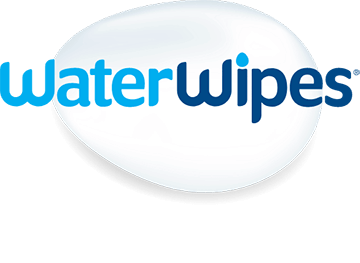What is baby acne?
Baby acne, also known as acne neonatorum, is acne that occurs on a newborn's skin. It is usually characterized by small red or white bumps and often develops within the first two to four weeks after birth. Infantile acne, meanwhile, is slightly different and begins later (between three and six months old).
Baby acne can occur anywhere on the face but usually appears on the cheeks, nose, and forehead. It’s a temporary skin condition and often clears up on its own within three to four months.
Why do babies get acne?
Babies can get acne as a result of being exposed to certain hormones before they are born. It is quite common and there are no specific risk factors. Baby acne is not caused by the same bacterium that usually causes acne in teenagers or adults. Scientists are unsure of the exact causes of baby acne, but they believe that hormones and overactive oil glands may
Why do babies get pimples?
Various types of pimples and rashes can affect delicate newborn skin. Fortunately, the majority of these are harmless. They will usually disappear on their own after a few days or weeks.
Common causes of pimples might include:
Neonatal acne is usually indicated by the tell-tale signs of pink pimples and/or small or red/white bumps on the face. Baby acne usually develops within the first two to four weeks after birth. It can occur anywhere on the face but usually appears on the cheeks, nose, and forehead.
Milia appears as small white bumps on the face, particularly around the nose. This is caused by blocked oil glands and will usually disappear as the baby develops and their oil glands open up.
Salmon patches can appear on the back of the neck or in between the eyes. These are nests of blood vessels that are thought to be caused by maternal hormones. These will usually go away after a few months, although in rare circumstances those on the back of the neck may be permanent.
Erythema toxicum causes blotchy red patches on the skin. There is no known cause of this, but it usually resolves itself within a few weeks without the need for treatment.
Newborn acne treatments and remedies
Baby acne is not normally serious or harmful and will usually resolve itself within a few weeks or months. Newborn acne treatments are not typically required. However, a baby’s skin can be helped in this way:
Keeping the affected area clean – Cleanse the area with warm water twice or thrice a day. Gently pat the skin dry.
Avoiding soap – Using soap or lotion on the affected areas may make the symptoms worse.
Do not pick at the acne – Squeezing or picking at the baby acne may cause damage to the baby’s fragile skin.
Avoiding adult acne products – Do not use adult acne or other adult skin care products.
Speaking to your doctor if the problem persists – If the problem does not go away over time, or is severe, ask your doctor about prescription or over-the-counter medication that might help, such as antibiotic creams and gels.
Looking after a baby’s skin is important. Read on to find out more about how to keep their skin clean.
Can you prevent baby acne?
As it typically occurs as a result of hormones, baby acne can’t be prevented, but the following may help reduce inflammation and can lower the risk of a baby contracting other skin-related rashes:
Limit exposure to the sun, using shade, sun hats, and long-sleeved clothing, even in winter. The best protection for infants is to keep them out of the sun entirely.
Use petroleum jelly rather than moisturizer for dry patches of skin.
Pat the baby completely dry after bath time before putting on a diaper or clothing.
Use a soft washcloth and lukewarm water or water-based wipe to keep the baby clean between bath times – you do not need to bathe the baby every day. WaterWipes’ baby wipes contain 99.9% water and a drop of fruit extract so they are suitable for newborn’s skin.
Avoid triggers for contact dermatitis – these can include urine and feces, soaps and detergents, saliva, latex, cosmetics, lotions, and dyes.
Trim baby’s nails regularly to avoid them accidentally scratching themselves.
Baby acne FAQs
How common is baby acne?
Baby acne affects approximately one in five newborns, and can come as a result of exposure to hormones before birth. It usually develops within the first month after birth, while infantile acne is different and often begins between three and six months old. Baby acne usually clears up on its own.
Does breast milk help with baby acne?
There is no scientific evidence to suggest that breastmilk helps treat baby acne. The antimicrobial properties of breast milk mean it could help destroy bacteria or reduce microbes. As baby acne is not caused by the same bacteria as adult acne, this might not help with a baby acne breakout - but could help with the overall healthiness of the baby’s skin.
When does baby acne peak?
Baby acne usually appears within the first two to four weeks of life but can appear anywhere up to six weeks. It will usually be resolved by the time the baby is a few months old. If the baby develops acne once they have passed the age of six weeks, this could be something that requires professional treatment.
What is the most common neonatal skin condition?
There are several common neonatal skin conditions a baby may develop. These include baby acne, erythema toxicum, milia, salmon patches, and jaundice. Darker-skinned babies may also be susceptible to congenital melanocytosis. All these conditions will usually clear up by themselves over time.

